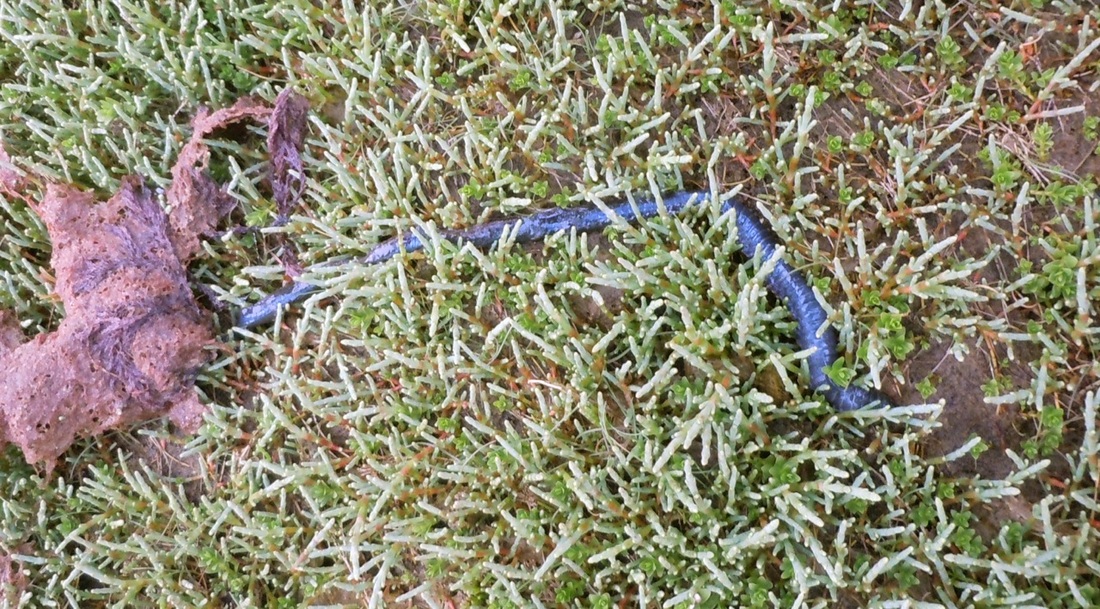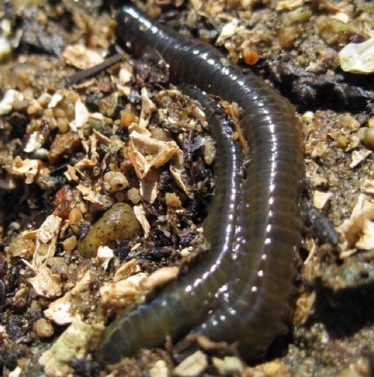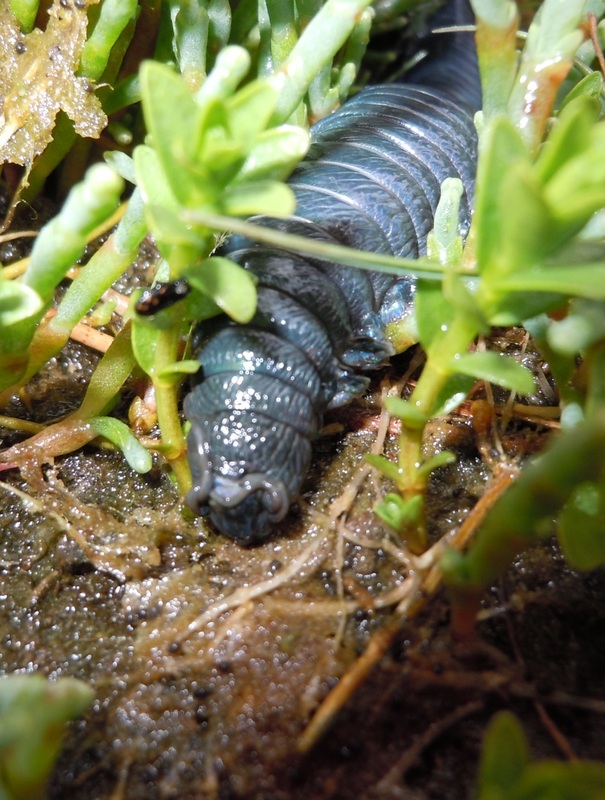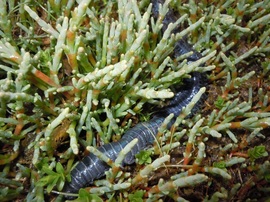Clam worm, pile worm, mussel worm, banner sea-nymph • Nereis vexillosa
Identification
This iridescent greenish-blue to brownish or greyish worm is 15-30 cm long and nearly 1 cm wide. It has large paddle-shaped parapodia; the posterior parapodia bear prominent strap-shaped lobes (termed ligules) that are raised like waving banners or flags. It has large black pincer-like jaws that it can evert when disturbed.
Habitat & Range
The clam worm is an intertidal and subtidal species often found buried in sand-gravel sediment, among barnacle clusters, or in mussel beds. It is often found by clam diggers. Its range extends from Alaska to southern California.
Similar Species
Two species of giant clam/piling worm, Nereis branti and N. virens, are difficult to differentiate from each other and are larger versions of the clam worm. They grow to 1.5 m and have more rounded leaf-shaped lobes (ligules).
Human Uses
Bottom-fish anglers commonly use this worm as bait.
iNaturalist
https://www.inaturalist.org/taxa/81790-Nereis-vexillosa
This iridescent greenish-blue to brownish or greyish worm is 15-30 cm long and nearly 1 cm wide. It has large paddle-shaped parapodia; the posterior parapodia bear prominent strap-shaped lobes (termed ligules) that are raised like waving banners or flags. It has large black pincer-like jaws that it can evert when disturbed.
Habitat & Range
The clam worm is an intertidal and subtidal species often found buried in sand-gravel sediment, among barnacle clusters, or in mussel beds. It is often found by clam diggers. Its range extends from Alaska to southern California.
Similar Species
Two species of giant clam/piling worm, Nereis branti and N. virens, are difficult to differentiate from each other and are larger versions of the clam worm. They grow to 1.5 m and have more rounded leaf-shaped lobes (ligules).
Human Uses
Bottom-fish anglers commonly use this worm as bait.
iNaturalist
https://www.inaturalist.org/taxa/81790-Nereis-vexillosa
References
Cowles, D. (2009). Nereis vexillosa Grube, 1851. Invertebrates of the Salish Sea. Rosario Beach Marine Laboratory. Accessed 10/10/2014.
Harbo, R. M. (2011). Whelks to whales: Coastal marine life of the Pacific Northwest. Madeira Park, BC: Harbour Publishing. P. 78.
Lamb, A., and Hanby, B. (2005). Marine Life of the Pacific Northwest [electronic resource]. Madeira Park, BC: Harbour Publishing.
Authors and editors of page
Kelly Fretwell and Brian Starzomski (2014).
Cowles, D. (2009). Nereis vexillosa Grube, 1851. Invertebrates of the Salish Sea. Rosario Beach Marine Laboratory. Accessed 10/10/2014.
Harbo, R. M. (2011). Whelks to whales: Coastal marine life of the Pacific Northwest. Madeira Park, BC: Harbour Publishing. P. 78.
Lamb, A., and Hanby, B. (2005). Marine Life of the Pacific Northwest [electronic resource]. Madeira Park, BC: Harbour Publishing.
Authors and editors of page
Kelly Fretwell and Brian Starzomski (2014).








